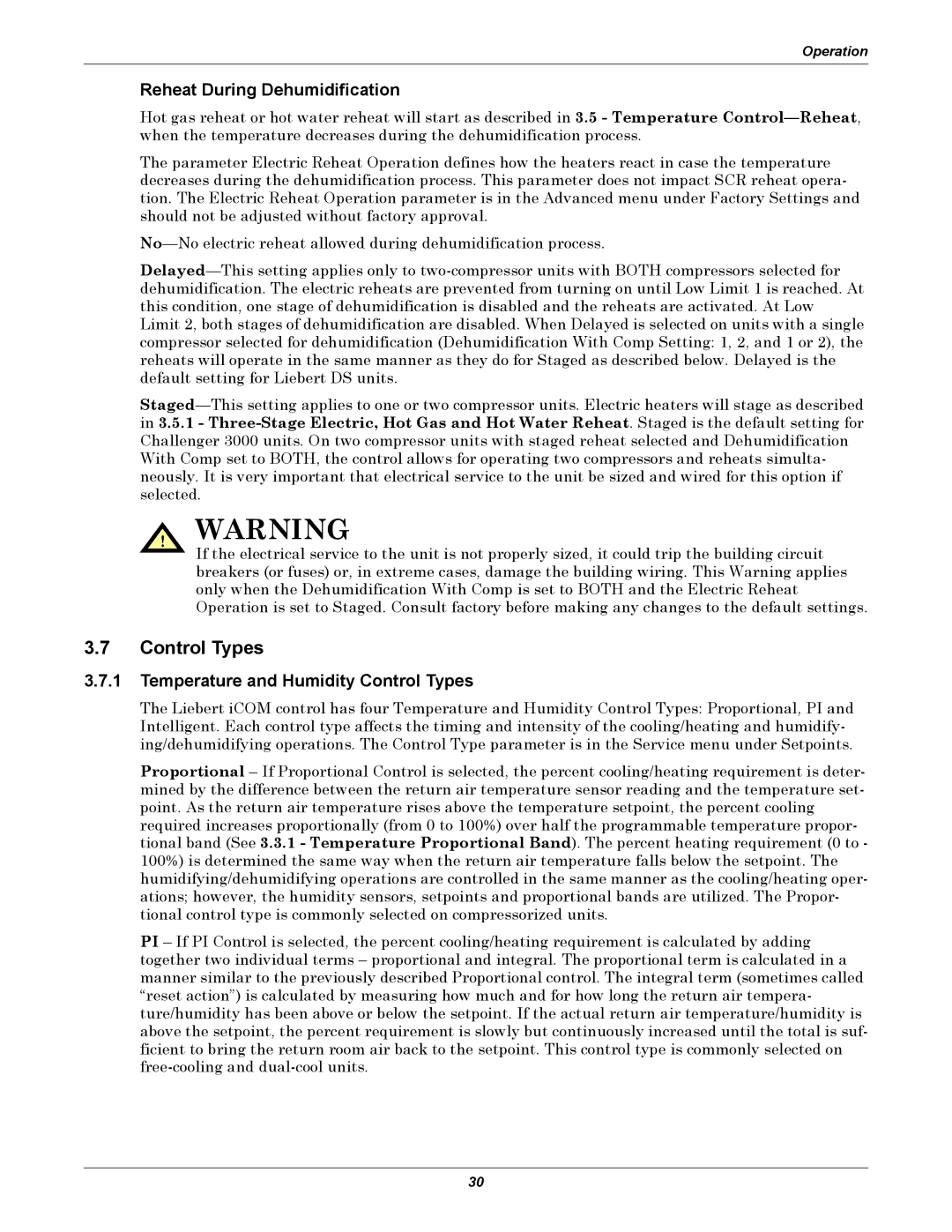
Operation
Reheat During Dehumidification
Hot gas reheat or hot water reheat will start as described in 3.5 - Temperature
The parameter Electric Reheat Operation defines how the heaters react in case the temperature decreases during the dehumidification process. This parameter does not impact SCR reheat opera- tion. The Electric Reheat Operation parameter is in the Advanced menu under Factory Settings and should not be adjusted without factory approval.
! WARNING
If the electrical service to the unit is not properly sized, it could trip the building circuit breakers (or fuses) or, in extreme cases, damage the building wiring. This Warning applies only when the Dehumidification With Comp is set to BOTH and the Electric Reheat Operation is set to Staged. Consult factory before making any changes to the default settings.
3.7Control Types
3.7.1Temperature and Humidity Control Types
The Liebert iCOM control has four Temperature and Humidity Control Types: Proportional, PI and Intelligent. Each control type affects the timing and intensity of the cooling/heating and humidify- ing/dehumidifying operations. The Control Type parameter is in the Service menu under Setpoints.
Proportional – If Proportional Control is selected, the percent cooling/heating requirement is deter- mined by the difference between the return air temperature sensor reading and the temperature set- point. As the return air temperature rises above the temperature setpoint, the percent cooling required increases proportionally (from 0 to 100%) over half the programmable temperature propor- tional band (See 3.3.1 - Temperature Proportional Band). The percent heating requirement (0 to - 100%) is determined the same way when the return air temperature falls below the setpoint. The humidifying/dehumidifying operations are controlled in the same manner as the cooling/heating oper- ations; however, the humidity sensors, setpoints and proportional bands are utilized. The Propor- tional control type is commonly selected on compressorized units.
PI – If PI Control is selected, the percent cooling/heating requirement is calculated by adding together two individual terms – proportional and integral. The proportional term is calculated in a manner similar to the previously described Proportional control. The integral term (sometimes called “reset action”) is calculated by measuring how much and for how long the return air tempera- ture/humidity has been above or below the setpoint. If the actual return air temperature/humidity is above the setpoint, the percent requirement is slowly but continuously increased until the total is suf- ficient to bring the return room air back to the setpoint. This control type is commonly selected on
30
